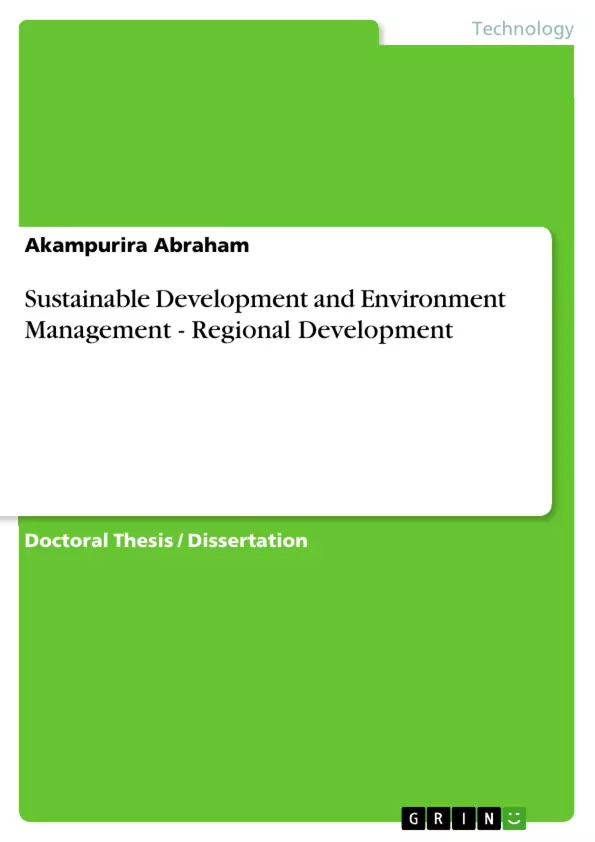Man is dependent on the physical environment for his survival. He has however
failed to tame it controllably. Man’s desire to satisfy his needs have led to
increased human use of the environment. Human negligence in addition to
collective actions for economic gains has put the environment at a disadvantage.
Many of the natural ecosystems have been interfered with. This has been through
encroachment on forest reserves, degradation of wetlands, uncontrollable
expansion of agricultural land leading to soil erosion and soil exhaustion,
overgrazing and burning of grasslands leading to bear soils that are susceptible to
erosion agents. A sustainable situation occurs when man’s ability to use natural
resources can be replenished naturally. Man’s activity has outstretched the ability of
these resources to replenish naturally. The interactions of man’s current processes
with the environment have strained it. The man’s disturbance affects the
interdependence of the atmosphere, that is, the lithosphere, the hydrosphere and
the biosphere which leads to environmental degradation. It has caused negative
impact in several ways such as such as global warming, acidification, fossil and
resource depletion, photo chemical oxidation, human toxicology, and fresh water
aquatic pollution.
1.2 Purpose of the study.
- To aid the people to be aware of the objectives of the principles and
perspectives of sustainable development and environmental management.
- To be able to identify the linkages between environment, society and
development.
- To develop environmental planning skills.
[...]
Table of Contents
- Chapter One
- 1.1. Introduction
- 1.2. Purpose
- 1.3. Definitions
- 1.4 Conceptual frame work
- Chapter Two
- 2.0 Causes of environment degradation
- Chapter Three
- 3.0 Impact of environmental mismanagement
- Chapter Four
- 4.0 Environment management
- 4.1 Sustainable Agriculture
- 4.2 Mixed farming
- 4.3 Multiple cropping
- 4.4 Water management
- 4.5 Forest management
- 4.6 Improved health for sustainable
- 4.7 Environmental Management. Principles of Quantum theory.
- 4.8 Other parameters for sustainable development
- Chapter Five
- 5.0 Recommendations
- Chapter Six
- 6.0 Conclusion
Objectives and Key Themes
This text aims to educate readers on the principles and perspectives of sustainable development and environmental management. It seeks to foster an understanding of the interconnectedness of the environment, society, and development, while equipping readers with environmental planning skills. The key themes explored are:- The relationship between human activity and environmental degradation.
- The importance of sustainable resource management for future generations.
- The interconnectedness of environmental, economic, and socio-political factors in achieving sustainable development.
- The opportunities and challenges presented by globalization for sustainable development.
Chapter Summaries
Chapter One
This chapter introduces the concept of sustainable development and environmental management. It highlights the dependence of human survival on the physical environment and the negative impact of human activities on the environment, leading to issues such as soil erosion, resource depletion, and pollution. The chapter also explores the definition and importance of sustainable development, emphasizing the need for resource conservation and responsible management for future generations.Chapter Two
This chapter delves into the causes of environmental degradation, examining the various ways in which human actions contribute to the deterioration of the natural world. It explores topics such as deforestation, wetland degradation, and soil exhaustion, emphasizing the need for responsible resource utilization and management practices.Chapter Three
This chapter focuses on the consequences of environmental mismanagement. It explores the negative impacts of human activities on various ecosystems, including the effects on global warming, acidification, resource depletion, and pollution. The chapter highlights the importance of addressing these issues to ensure environmental sustainability.Chapter Four
This chapter outlines strategies for environmental management and sustainable development. It explores various practices like sustainable agriculture, mixed farming, multiple cropping, water management, and forest management, emphasizing their roles in preserving resources and promoting environmental sustainability. The chapter also discusses the principles of quantum theory in relation to environmental management and explores additional parameters for achieving sustainable development.Chapter Five
This chapter focuses on recommendations for promoting sustainable development. It presents practical suggestions for individuals, communities, and governments to adopt responsible practices that contribute to the preservation of the environment and the well-being of future generations.- Quote paper
- Doctor Akampurira Abraham (Author), 2013, Sustainable Development and Environment Management - Regional Development, Munich, GRIN Verlag, https://www.grin.com/document/209437



